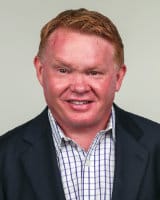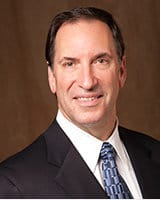
I am often asked 'How do you appraise a dental practice' and 'What percent do you use to get the price?'. If the process were that simple, we wouldn't need experts in practice appraisals, just a calculator that can multiply two numbers.
Professional appraisers approach the task of every appraisal with the same principles. In each case, we are required to consider the three formal approaches to value - The Market Approach, The Asset Approach and The Income Approach.
Within each approach there are various methodologies that may be applied. It is ultimately the appraiser's experience, judgment and the study of the individual practice that determines which approaches and methodologies to apply and which ones to discard in establishing the final price.
The first Approach to consider is the Asset Approach, which determines practice price by assessing the values of the practice's collective tangible and intangible assets. This method is not as simple as it may appear as there are multiple values for these assets. Equipment has a basis value, or the cost to acquire that asset. Secondly, there is book value, which is the basis value adjusted by the IRS schedules for depreciation. Then there is the replacement value, or the cost to buy an equal quantity and quality of assets. Fourth, there is the in-place value, with the equipment generating income in a working office. Finally, there is the street value, which is the price the equipment would bring if it were put in a warehouse and sold. Given how difficult it is to settle on a value for tangibles, consider the difficulty in accurately assessing the value of intangible assets, such as goodwill, which constitutes the greatest majority of the value of most dental practices.
The second Approach to consider is the Income Approach, which actually calculates the price a buyer can afford to pay for a practice, given the practice gross income, expenses, and a commensurate purchaser income for the amount of treatment that would be rendered. The Income Approach methodology most often used to value dental practices is the Single Period Capitalization Method, which uses a single figure for profit, The Multiple Period Discount Method is applied in practices when the long term growth rate has not stabilized and it uses variable future growth rates in determining price. I prefer the Amortization of Earnings method, as it is far less sensitive to subjective judgment, and measures more accurately the actual price a buyer can afford to pay. This method simply considers the earnings to be the amount available for debt service (bank payments) and considers current lending rates and terms to arrive at how much a buyer can afford to borrow by using the earnings as the monthly debt service.
The third Approach, the Market Approach is a major determinant of the Fair Market Value of a practice, since Fair Market Value actually comes from the market itself. In the Market Approach, the appraiser identifies similar practices that have actually sold and applies the price/gross ratio of those practice sales to the subject practice. The most valid statistic to compare practices is the price/gross ratio. Comparing the price/gross ratios of similar practices that have actually sold to the subject practice provides a price/gross ratio to apply to the subject practice. The most important comparative qualities for practices are demand for the location, attractiveness of the office and the fee for service component. The successful application of this approach depends on having a sufficiently large database of transactional data and the judgment to identify true comparables. Too many times appraisers apply the overall average percentage of all practice sales, not realizing that only 3% of all practices were sold at the average percentage. The bell curve of price/gross ratios is very broad and very flat, requiring that each individual practice be examined on its own merits.
Since buyers rarely pay more the market bears or more than they can afford for a practice, the final evaluation result for an ongoing practice with adequate cash flow is typically the lower of the Market Approach or the Income Approach. The Asset Approach is rarely used in an ongoing practice. It is usually reserved in cases of an inactive practice or a brand new practice that does not yet earn a profit. The principle of substitution applies in non-profitable practices, since buyers would usually prefer to purchase a practice with a at least some cash flow, versus a start-up, with no existing cash flow, provided that they are equally priced.
Some appraisers will average the results of different methodologies, which is as logical as mixing silicon and polysulfide impression materials to get a better impression. In the case of appraisals, there is usually one method that gets to the heart of value much better than others, and it should not be degraded for the sake of trying to use all of the values that the appraiser derived.
A professional and accurate appraisal is the result of much study, judgment, experience and deliberation, which not only provides a final price, but is able to prove why that price is the only logical result.

 Add me to your address book
Add me to your address book



